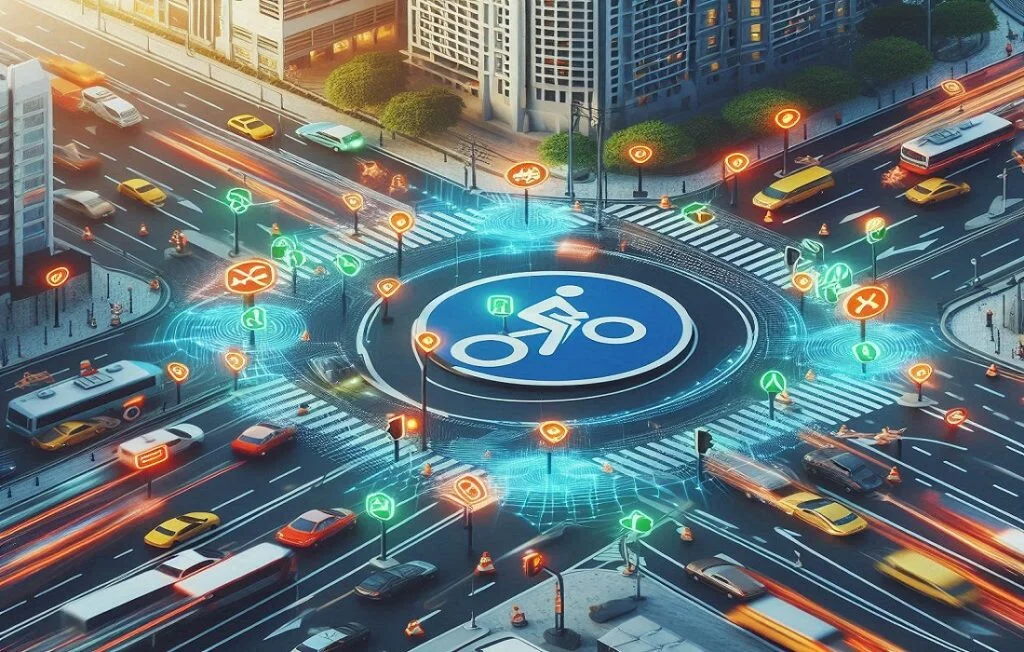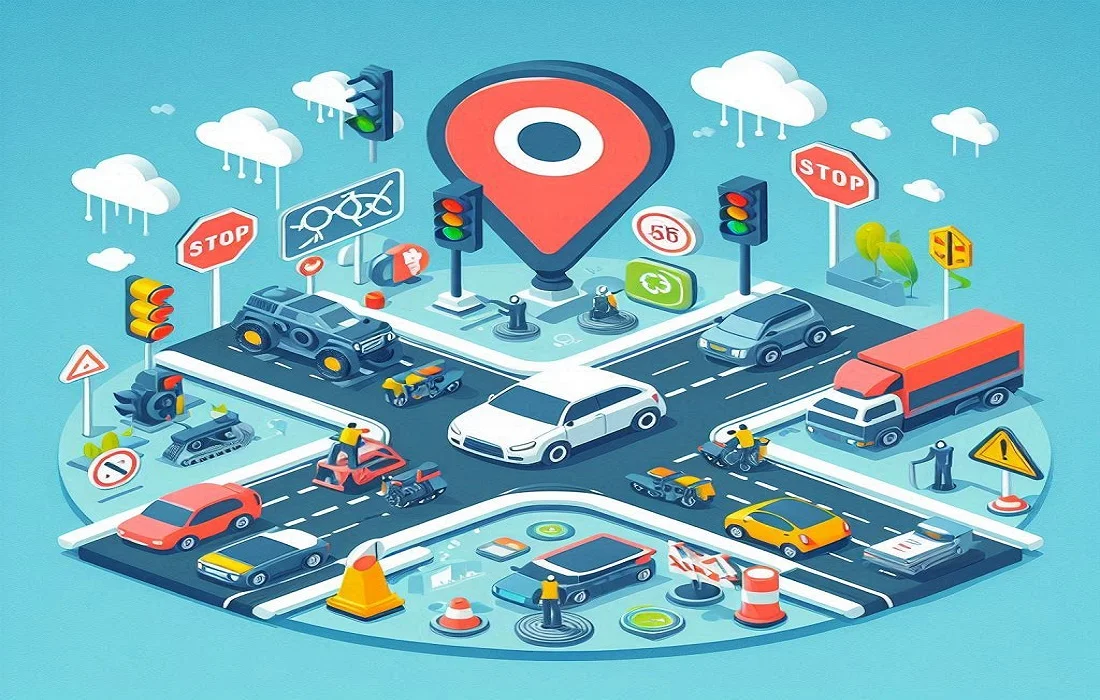In today’s rapidly growing urban landscapes, traffic signals are the unsung heroes of road safety, meticulously orchestrating a symphony of vehicles, cyclists, and pedestrians. These vital tools not only ensure road safety measures but also keep our streets organized, preventing potential chaos. By following traffic signals, we can maintain smooth traffic flow, reduce road accidents, and promote a culture of safety and order on the road.
Introduction to the Importance of Traffic Signals
Traffic signals are foundational to any modern transportation system, maintaining order and significantly contributing to the safety of drivers and pedestrians alike. By providing clear instructions through a set of universally understood colors and symbols, traffic signals prevent confusion and organize movement. This organized flow allows us to travel safely and efficiently while reducing the risk of traffic-related incidents.
Why Traffic Signals Are Essential for Road Safety
Traffic signals serve as a traffic management system, crucial for preventing road accidents and maintaining order. Here’s how they contribute to a safer driving environment:
- Promote Predictability: Traffic signals create an expectation for drivers, letting them anticipate and respond to road situations in a controlled manner.
- Reduce Collision Risks: By dictating the right-of-way and providing clear instructions, traffic signals lower the likelihood of accidents at intersections.
- Guidance for Pedestrians and Cyclists: Traffic signals aren’t just for vehicles; they also protect pedestrians and cyclists, ensuring their safety in crossing streets and maneuvering through intersections.
Read More:10 Importance of Traffic Rules: Why Following Road Safety Guidelines Matters
The Role of Traffic Signals in Enhancing Road Safety
Following traffic signals is directly linked to reduced traffic accidents and safer roads. When drivers adhere to traffic signals, they create a safer environment by avoiding the risks associated with running red lights or speeding through yellow signals. Proper adherence also minimizes aggressive driving and confusion, two factors that often lead to traffic accidents.
Benefits of Following Traffic Signals
Observing and obeying traffic lights provides numerous advantages beyond accident prevention. Here are some key benefits:
- Smooth Traffic Flow: Coordinated traffic signals reduce unnecessary stops and starts, helping maintain a steady flow of vehicles on the road.
- Reduced Traffic Congestion: Efficient traffic signal timing helps prevent bottlenecks, particularly in high-density areas, which enhances the overall travel experience.
- Enhanced Pedestrian Safety: Traffic signals provide pedestrians with designated times to cross the road safely, helping prevent pedestrian accidents.
- Promotion of Responsible Driving: By encouraging a sense of order, traffic signals cultivate a driving etiquette that fosters mutual respect among road users.
How Traffic Signals Help Prevent Accidents
Clear and visible traffic signals help drivers make informed decisions, which in turn reduces the risk of misunderstandings and accidents. Some critical ways traffic signals prevent accidents include:
- Visibility: Properly visible traffic signals, even from a distance, allow drivers to prepare for upcoming actions, whether it’s stopping, slowing, or turning.
- Consistency: Consistent and standardized signals eliminate guesswork and confusion, helping drivers make safer choices.
- Direction of Traffic: Signals dictate traffic flow and ensure vehicles are moving in their designated paths, preventing accidents that could arise from merging or sudden turns.
Different Types of Traffic Signals and Their Purposes
Traffic signals come in several forms, each serving a unique purpose within the traffic management system. Here are the most common types and their roles:
- Stop Lights: These regulate the flow of vehicles at intersections, preventing simultaneous cross-traffic movements.
- Pedestrian Signals: Designed for pedestrian crossings, these signals ensure safe crossing times and alert drivers to be mindful of pedestrians.
- Turn Signals: These guide vehicles making turns, reducing the risk of collisions by coordinating turn movements with oncoming traffic.
- Flashing Signals: Used in emergency situations or low-traffic areas, these signals alert drivers to proceed with caution, often replacing standard lights.
Each type of signal plays an integral part in traffic flow management, contributing to organized movement and preventing road accidents.
Common Misconceptions About Traffic Signals
There are several misunderstandings regarding the necessity of traffic signals, particularly in areas with low traffic. Here are some common misconceptions:
- “Traffic signals aren’t needed in low-traffic zones.” Traffic signals play an essential role even in low-density areas, ensuring safe passage at intersections.
- “Signals cause unnecessary delays.” While it may feel like signals slow down your journey, they are timed strategically to promote a safer, faster flow of traffic.
- “Yellow lights mean speed up.” Yellow signals are intended as a warning to prepare to stop, not to accelerate.
By understanding the true purpose of traffic signals, drivers can better appreciate the structure and order they bring to our roadways.
How Traffic Signals Improve Road Etiquette
Traffic signals serve as more than just road rules; they are instruments that promote responsible driving behavior and respectful interactions among road users. When drivers follow signals, they demonstrate respect for others on the road, fostering a sense of road etiquette that is essential for a cooperative driving environment. This etiquette reduces road rage incidents, encourages courtesy, and supports a smoother traffic flow.
The Future of Traffic Signals and Road Safety
With advancements in technology, smart traffic signals are revolutionizing our approach to road safety. These new-generation traffic lights use sensors, artificial intelligence, and machine learning to adjust their timing based on real-time traffic data. These innovations offer several potential benefits:
- Adaptive Traffic Flow: Smart signals can adapt to changing traffic volumes, reducing congestion during peak hours.
- Enhanced Pedestrian Detection: AI-enhanced signals can detect pedestrians and adjust timings to prioritize their safety.
- Improved Emergency Response: Smart traffic systems can respond to emergency vehicles, ensuring they reach their destinations faster and more safely.
The future of traffic signals holds promise for a safer, more efficient driving experience, where road safety technology continues to evolve.
Conclusion: The Vital Role of Traffic Signals in Road Safety
In conclusion, traffic signals are indispensable components of modern road safety measures. They provide essential guidance to drivers, pedestrians, and cyclists, ensuring an orderly flow of movement and significantly reducing traffic accidents. Following traffic signals promotes safe driving habits, prevents misunderstandings, and enhances the overall quality of our transportation systems. As we move toward a future of smarter and more adaptable traffic management, adhering to these foundational safety measures will continue to be crucial for safer roads and a more harmonious driving environment.
FAQs
What is the importance of traffic signals in road safety?
Traffic signals are crucial for road safety as they regulate traffic flow and reduce the likelihood of accidents. By guiding vehicles, pedestrians, and cyclists through intersections, traffic signals prevent confusion and organize movement, making roads safer for everyone.
How do traffic signals help prevent road accidents?
Traffic signals prevent accidents by providing clear, predictable directions, such as when to stop or go. This organized approach minimizes unexpected actions by drivers, reducing the risk of collisions, especially at busy intersections.
What are the benefits of following traffic signals?
Following traffic signals ensures smoother traffic flow, reduces congestion, and enhances pedestrian safety. It promotes responsible driving, decreases accident risks, and fosters a disciplined, safer road environment.




